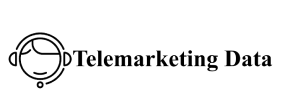Email marketing remains a cornerstone of digital strategy, but a beautifully designed email is useless if no one clicks on your calls to action. Improving your email click-through rate (CTR) is crucial for driving traffic, generating leads, and ultimately, increasing revenue. The key to unlocking higher CTRs lies in understanding your audience, job function email database and the best way to understand them is through data analysis. This article explores how to leverage data to optimize your emails for maximum engagement.
Understanding the Power of Email Data
Before diving into specific strategies, let’s emphasize the importance of collecting and analyzing email marketing data. Generic “best practices” often fall short because every audience is unique. What resonates with one group might completely miss the mark with another. Data provides concrete evidence of what is working, what isn’t, and where you should focus your efforts.
Email marketing platforms provide a wealth of information, including:
Open Rates: Indicates how many recipients opened your email.
Click-Through Rates (CTR): Measures using ai to build an industry email list faster the percentage of recipients who clicked on a link within your email.
Conversion Rates: Tracks how many recipients completed a desired action (e.g., purchase, signup) after clicking a link.
Bounce Rates: Shows the percentage of emails that failed to deliver.
Unsubscribe Rates: Reveals how many recipients opted out of your email list.
Device and Client Usage: Details the devices and email clients used to open your emails.
By analyzing these metrics in conjunction with demographic and behavioral data, you can gain valuable insights into your audience’s preferences and tailor your email campaigns accordingly.
Data-Driven Strategies to Enhance Email CTR
Once you’re equipped with data, you can implement targeted strategies to improve your email click-through rates. Here are some effective approaches:
Optimizing Subject Lines Through A/B Testing
Your subject line is the first impression. It determines whether your email gets opened or ignored. A/B testing different subject lines allows you to identify which ones resonate most with your audience.
Test different lengths: Experiment with shorter, lithuania phone number punchy subject lines versus longer, more descriptive ones.
Try different tones: Explore using questions, humor, urgency, or personalization.
Incorporate keywords: Include relevant keywords that catch the reader’s eye.
Analyze the results:
Track open rates and CTRs for each variation and identify the winning subject lines.
Example: Test “Limited Time Offer Inside!” against “Last Chance: 50% Off Your Favorite Items”.
Segmenting Your Audience for Hyper-Personalization
Generic emails rarely drive high CTRs. Segmenting your audience based on demographics, purchase history, engagement levels, and other criteria allows you to create highly targeted campaigns that speak directly to their needs and interests.
Demographic Segmentation:
Tailor content based on age, location, gender, etc.
Behavioral Segmentation: Target users based on their past interactions with your website or email (e.g., recent purchases, abandoned carts, website visits).
Purchase History Segmentation: Provide relevant product suggestions and exclusive deals based on previous purchases.
Engagement-Based Segmentation: Separate active subscribers from inactive ones to re-engage or remove less responsive users.
Example: Sending a special discount email to customers who abandoned their cart or providing exclusive content to your most loyal subscribers.
Analyzing Email Content and Design
The content and design of your email play a crucial role in driving clicks. Analyze your existing email campaigns to identify patterns and areas for improvement.
Placement of Calls to Action (CTAs): Experiment with different CTA placements (above the fold, within the body, at the end) to see what generates the most clicks. Use clear, concise, and action-oriented language (e.g., “Shop Now,” “Learn More,” “Get Started”).
Email Length and Structure:
Determine the optimal email length for your audience. Some audiences prefer concise emails, while others are receptive to longer, more detailed messages. Use headings, subheadings, and bullet points to break up the text and make it easier to read.
Image and Video Usage: Test the effectiveness of using images and videos in your emails. High-quality visuals can capture attention and drive engagement, but avoid using too many images, as they can slow down loading times.
Mobile Optimization:
Ensure your emails are responsive and display correctly on all devices. A significant portion of email is opened on mobile devices, so mobile optimization is essential. Use larger font sizes and clear CTAs that are easy to tap on a small screen.
By consistently analyzing data and implementing the strategies above, you can significantly improve your email click-through rates, drive more traffic to your website, and ultimately achieve your marketing goals. Remember that data analysis is an ongoing process. Continuously monitor your email performance and adjust your strategies based on the results. Good luck!

